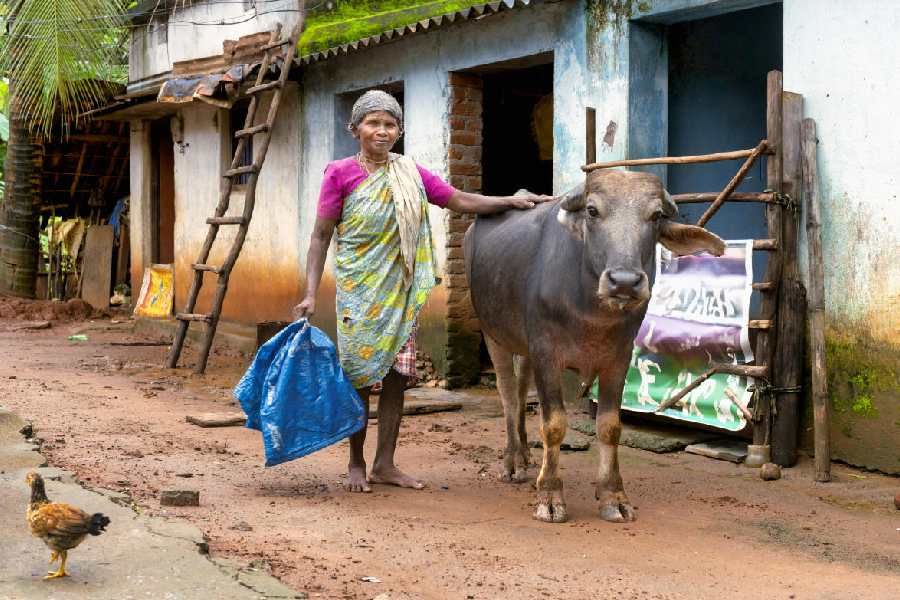Book: CHOICE
Author: Neel Mukherjee
Published by: Hamish Hamilton
Price: Rs 699
Neel Mukherjee’s latest novel, Choice, is a difficult book to respond to, not least because it is so anxious to control readers’ response as opposed to eliciting it. In form, it may perhaps best be described as a triptych of novellas — tellingly titled as Parts I, II and III — each working in concatenation and thematically spring-boarding onto the next. “Each story… is different in subject matter, setting, featured characters and the points in the social spectrum they are lifted from, and notably and subtly, in style”: Ayush, a gay Bengali man working in a London publishing house, who is the protagonist of Part I, thinks this about a book by the pseudonymous, M.N. Opie, titled Yes, The World (yes, Elena Ferrante is duly recalled).
This book within the book rekindles the idealism of Ayush’s youth in its staunch refusal to leverage identity politics and total disregard for pandering to bestselling trends. Ayush is deeply angry about the dictum his economist partner, Luke, and his publishing house swear by: “Economics is life, life is economics.” Part I of Choice sets up, through Ayush’s fight to get Opie’s book published against all marketing odds, the cause for Mukherjee’s own. This would have been wittily self-referential were it not for the fact that we are also told that upon reading one of Opie’s stories which features a dog (as Part I does), the “page had blurred for Ayush as he reached the end.” Unfortunately, the page did not blur for this reader at the end of Ayush’s story. Some readers can be contrary creatures: they beg to be at the mercy of authorial machinations but draw the line at instruction.
Part II of Choice is literally one of Opie’s stories written out. As the Part I narrator puts it, it is “a long story about a young Eng. Lit. academic named Emily — an early modernist, no less — [sic] in a London university who is in a car accident returning home from a dinner party one night.” Aggravatingly, however, a potentially intriguing experiment with the realist novel is again strangled at birth by the narrator’s desire to control his audience: “Ayush tried, and repeatedly failed, to put his finger on the elusive soul of the story… In fact, entirely unwritten in the story was its chief meaning: how no escape was offered by making what one thought was the correct moral choice.” One could say that Emily’s story is indeed about an unusual choice, which raises piquant questions about how stories work, who should tell whose story, and the moral implications (always murky) of the power that the telling of stories gives to the teller and may, somewhat counter-intuitively, also impart to the told. But this would be superfluous. The reader can only nod in mute assent and scramble to keep up with the rapidly-served Easter eggs and Russian dolls of authorial self-textuality.
Part III, however, is a different story. It performs a version of Emily’s writing, thereby enriching our understanding of narratives as things that may be possessed and may in turn possess us. The simple tale of how the gift of a cow as part of a self-help initiative to a poor rural family in southern Bengal near the Bangladesh border leads to tragic consequences perfectly expresses the “entirely unwritten” outrage that smoulders at the heart of the book at the privileging of numbers and statistics over the particularities of human choices and the desires that drive them. There is humour and affection in the handling of Gauri the cow, which becomes a person in her own right much more than Ayush’s old dog, Spencer. In the tradition of the acclaimed chroniclers of rural Bengal, such as Manik Bandyopadhyay, Mukherjee’s gaze is austerely unsentimental but saturated with deep understanding and unpatronising compassion as he convincingly enters the lives and the minds of the beleaguered mother, Sabita, the young siblings, Sahadeb and Mira (inevitably recalling the iconic Apu-Durga duo in Satyajit Ray’s Pather Panchali), and their mostly absent “baba,” Pulak. Mukherjee’s clear-eyed tenderness for these people, who may well be counted amongst the most wretched of the earth, does lead to a blurring of the page. One can only wonder what the book could have done had the author’s choice been to tell Ayush and Emily’s stories without taking the trouble of inventing them.










